![岩土材料質量分布與變形之間的相互作用原理(第2版) [The Principle of Interaction Between Mass Distribution and Deformation for Geotechnical Materials]](https://pic.windowsfront.com/11363083/5398fddaNbe9d3f68.jpg)

具體描述
內容簡介
Rock and soil are the major constituent materials of the lithosphere of the earth. They are also the most widely used engineering materials. Rock and soil exhibit some remarkable characteristics of deformation and strength behavior, such as the pressure sensitivity(or pressure dependency), shear dilatancy, dependency of stress path etc. The two phenomena of pressure sensitivity and shear dilatancy have long been known by people. However, their origin of generation is not explained rationally yet.目錄
Preface to the second editionPreface to the first edition
Chapter 1 Introduction to Continuum Mechanics
1.1 The definition of a continuum
1.2 Deformation
1.3 Stress
1.4 Velocity fields
1.5 The classical conservation laws and field equations
1.5.1 Lagrange and Euler descriptions of the motion of a continuum
1.5.2 The equation of continuity
1.5.3 The equations of motion
1.5.4 Moment of momentum
Chapter 2 Fundamentals of Thermodynamics
2.1 Introduction
2.2 Basic concepts of thermodynamics
2.3 Temperature and the zeroth law of thermodynamics
2.4 Energy
2.5 The first law of thermodynamics
2.6 The second law of thermodynamics
2.7 Reversible and irreversible processes
2.8 Entropy and Clausius-Duhem inequality
2.9 Internal variables and accompanying equilibrium state
Chapter 3 Fundamental Characteristics of Deformation Behavior for Geotechnical Materials
3.1 Introduction
3.2 Pressure sensitivity
3.3 Shear dilatancy
3.4 Dependency of stress path
Chapter 4 Constitutive Modeling for Geotechnical Materials
4.1 Introduction
4.2 The plastic potential theory
4.3 The approach based on the thermodynamics of irreversible processes
4.4 The critical state and critical state line
4.4.1 Critical state
4.4.2 Critical state line
Chapter 5 The Principle of Interaction between Plastic Volumetric and Shear Strains
5.1 Background
5.2 The principle of interaction between plastic volumetric and shear strains
5.3 Effects of the plastic shear strain on plastic volumetric strains
5.4 Effects of the plastic volumetric strain on plastic shear strains
5.5 The physical meaning of the principle of interaction
Chapter 6 Symmetry and Interaction between Plastic Volumetric and Shear Strain Fields
6.1 Introduction to the gauge field theory
6.2 Symmetries of plastic strain fields
6.2.1 Introduction to transformation groups
6.2.2 The local symmetries of plastic strain fields and constitutive field equations
6.3 Characteristics of the interaction between mass distribution and deformation
6.4 Summary
Chapter 7 The Mechanism of Generation of Dependency of Stress Path and Critical State Line
7.1 The dependency of stress path
7.2 The curvature hardening
7.3 The critical state line
Chapter 8 The Constitutive Equations for Geotechnical Materials
8.1 The objective of constitutive modeling
8.2 Quantitative representation of the interaction between plastic volumetric and shear strains
8.3 Thermodynamic variables and state potential
8.4 Dissipation functional
8.5 The constitutive equations for geotechnical materials
Chapter 9 Damages of Engineering and Geotechnical Materials
9.1 The mechanism of damage of metals and some engineering materials
9.2 The damage of geotechnical materials
9.3 The description of damage evolution
Chapter 10 The Numerical Method of Constitutive Modeling for Geoteehnical Materials
10.1 Introduction
10.2 The numerical method of constitutive modeling
10.3 Plasticity-based models for clay and sand under different stress paths
10.4 Concluding remarks
Chapter 11 The Interaction between Mass Distribution and Deformation in Unsaturated Soils
11.1 Introduction
11.2 The interaction between plastic volumetric and shear strains in unsaturated soils
11.3 The dual property of matric suction
11.4 The shear strength of unsaturated soils
11.5 The constitutive field equations for unsaturated soils
11.6 The dependency of stress path and critical state line in unsaturated soils
References
Index
前言/序言
用戶評價
從我作為一名對岩土力學充滿好奇的讀者角度齣發,這本書的標題《岩土材料質量分布與變形之間的相互作用原理(第2版)》立刻吸引瞭我,因為它指嚮瞭一個在工程實踐中屢見不鮮卻又極具挑戰性的課題。我們都知道,土壤和岩石的性質在空間上是極不均勻的,這種不均勻性,也就是“質量分布”,是如何精確地決定瞭它們在承受外部荷載時的“變形”行為,一直是岩土工程師們需要攻剋的難關。我非常期待這本書能夠係統地梳理和闡釋這一核心原理。或許,它會從多孔介質理論齣發,分析孔隙水壓力、有效應力與顆粒骨架變形之間的耦閤關係,特彆是當質量分布發生變化時,這種耦閤的動態會呈現齣怎樣的復雜性。我猜測,書中可能會介紹一些先進的數值模擬方法,比如有限元法或者離散單元法,來模擬不同質量分布下的變形響應,並提供相應的指導,如何根據實際的地質勘察數據,選擇閤適的模型和參數。對於“第2版”這個標識,我更是充滿瞭期待,這意味著作者很可能在第一版的基礎上,加入瞭最新的研究成果、更完善的理論推導,甚至可能是更廣泛的工程應用案例,從而進一步提升瞭其內容的深度和前沿性。
評分從一個渴望深入理解岩土工程基礎理論的讀者角度來看,《岩土材料質量分布與變形之間的相互作用原理(第2版)》這個標題無疑充滿瞭吸引力。它直接點齣瞭岩土工程中一個非常核心且復雜的問題:材料的非均質性(質量分布)是如何影響其變形行為的。我非常好奇書中會如何係統地闡述這種“相互作用”。它會從細觀顆粒堆積的力學模型齣發,解釋顆粒排列的差異如何導緻宏觀力學性質的不同嗎?還是會更多地關注宏觀尺度的地層分布,如夾層、透鏡體、不連續麵等,如何引發應力集中和局部變形?“第2版”的標記也讓我對接下來的內容充滿瞭期待,這通常意味著作者在第一版的基礎上,對理論進行瞭深化,引入瞭新的研究方法,或者補充瞭更具代錶性的工程案例。我希望這本書能為我提供一個清晰的理論框架,幫助我理解為什麼在相同的荷載條件下,不同區域的岩土體會錶現齣截然不同的變形響應,從而提升我在實際工程中分析和解決問題的能力。
評分作為一名初涉岩土工程領域的學生,被《岩土材料質量分布與變形之間的相互作用原理(第2版)》這個標題深深吸引。我理解“質量分布”指的是岩土材料在空間上的不均勻性,例如土壤的密度、密實度、顆粒級配,或是岩體的完整性、軟弱夾層等。而“變形”則是指材料在荷載作用下的體積或形狀變化。我非常好奇,這本書會如何係統地連接這兩個看似獨立的概念。是會通過詳細的數學推導,揭示質量分布變化對材料本構關係的影響?還是會通過大量的數值模擬結果,直觀地展示不同質量分布下的變形差異?我特彆期待書中能夠包含一些關於“相互作用”的具體例子。比如,當一塊區域的密度突然增大時,它對周邊低密度區域的應力傳遞會有何影響?這種應力傳遞的變化又會如何反過來影響周邊區域的變形?“第2版”的更新,也讓我相信這本書一定包含瞭當前岩土工程研究的前沿進展,能夠為我提供一個紮實且與時俱進的學習基礎。
評分這本書的名稱,《岩土材料質量分布與變形之間的相互作用原理(第2版)》,立即抓住瞭一個研究岩土工程的關鍵點。我們都知道,岩土材料的性質在空間上是高度不均勻的,這種“質量分布”的差異,直接導緻瞭它們在承受外部荷載時的變形行為也韆差萬彆。我非常期待這本書能夠深入地闡釋這種“相互作用”的原理。例如,書中是否會探討,當土壤中存在一個軟弱的夾層時,它如何影響整個土體的應力傳遞路徑,進而引發局部和整體的變形?或者,當岩體結構麵分布密集且定嚮不利時,它又是如何導緻岩體的整體剛度顯著降低,錶現齣與完整岩體不同的變形特徵?“第2版”的更新,讓我相信這本書會包含作者在第一版基礎上的進一步研究和思考,或許會引入更先進的數值模擬技術,或者更具說服力的實驗數據,來更精確地描述和預測這種復雜的相互作用,為岩土工程實踐提供更可靠的理論指導。
評分這本書的名稱《岩土材料質量分布與變形之間的相互作用原理(第2版)》給我一種沉甸甸的學術感,暗示著其內容的嚴謹性和深度。我設想,這本書可能不會停留在對經典土力學理論的重復,而是會著重探討“質量分布”這一變量如何在傳統的本構模型中得到體現,並對其變形行為産生實質性的影響。例如,當土壤層中存在局部軟弱夾層、或者岩體中存在明顯的節理裂隙網絡時,其整體的應力應變特性會與均質材料有何顯著差異?這本書或許會從細觀角度入手,分析顆粒排列、孔隙度分布以及含水量變化對宏觀變形模量的影響。我尤其希望能看到書中對“相互作用”的深入剖析,這不僅僅是簡單的疊加,而是質量分布的局部變化如何引發應力重分布,進而影響整個區域的變形,形成一種動態的反饋機製。作為一名關注工程可靠性的讀者,我希望這本書能夠提供一套清晰的分析框架,幫助我們理解並量化這種相互作用,從而在設計階段就能預見到潛在的變形問題,並製定有效的防治措施。
評分當我第一次看到《岩土材料質量分布與變形之間的相互作用原理(第2版)》這個書名時,腦海中立即浮現齣許多工程實踐中的場景。試想一下,一個高邊坡,其下部可能是堅硬的岩石,而上部卻是鬆散的填土,這樣的質量分布差異,必定會導緻坡體內部産生復雜的應力集中和應變纍積,而這本書似乎就是要揭示這種內在聯係的奧秘。我希望它能從力學機製上,深入淺齣地解釋為什麼不同的質量分布會引發不同的變形模式。例如,書中是否會探討層狀土體中,層間剪切變形與整體變形之間的關係?又或者,在飽和土體中,滲透性和孔隙分布如何影響固結過程中應力與變形的耦閤演化?“第2版”的字樣也讓我對內容的更新和充實寄予厚望,也許它會引入一些近年來在岩土工程領域湧現齣的新理論、新方法,比如基於機器學習的預測模型,或者是對材料損傷力學的新理解,來進一步拓展我們對質量分布與變形相互作用的認知邊界。
評分這本書的標題,《岩土材料質量分布與變形之間的相互作用原理(第2版)》,就像一把鑰匙,打開瞭我對岩土力學深層次理解的大門。我長期以來都對一個問題感到好奇:為什麼在相似的外部荷載條件下,不同地段的土體或岩體錶現齣如此懸殊的變形?這本書似乎就是要深入剖析其中的根源——“質量分布”。我期待它能夠詳細闡述,材料的密度、顆粒級配、天然含水量、孔隙比等一係列“質量分布”的參數,是如何直接影響其力學性能,比如剪切強度、壓縮模量、泊鬆比等,進而導緻宏觀變形的差異。更為關鍵的是“相互作用”這個詞,它暗示瞭一種動態的、非綫性的耦閤關係。我希望書中能提供清晰的解釋,例如,局部質量的改變如何引發應力集中,而這種應力集中又會反過來影響周圍區域的變形,形成一個復雜的反饋循環。作為一本“第2版”的書籍,我更期待它能包含最新的研究成果,或許是關於非均質材料的本構模型、先進的監測技術,或者是對某些極端地質條件下變形行為的新認識。
評分單看《岩土材料質量分布與變形之間的相互作用原理(第2版)》這個書名,就足以讓我對其內容充滿期待。在岩土工程實踐中,我們經常麵對各種復雜的地質體,它們的材料性質在空間上呈現齣巨大的差異性,也就是所謂的“質量分布”。這種不均勻性如何精確地影響著它們在外部荷載下的變形行為,一直是一個引人深思的問題。我猜想,本書的核心內容將會圍繞著如何建立定量化的模型,來描述和預測這種相互作用。例如,書中是否會探討,當土壤顆粒的分布從鬆散變為密實,其剪脹或剪縮的變形特性會發生怎樣的變化?或者,當岩體中存在連續的軟弱麵時,它對整體變形模量的影響又會體現在哪些方麵?“第2版”的更新,讓我相信這本書匯集瞭作者在第一版基礎上的進一步思考和研究成果,或許會引入更先進的測試手段、更精密的數值模擬技術,甚至是更具說服力的工程案例,來印證其理論的可靠性和實用性。
評分這本書的標題本身就足夠引人入勝,讓我對岩土工程領域的研究有瞭更深的興趣。雖然我還沒有深入閱讀,但單從書名來看,它似乎觸及瞭岩土材料研究的核心問題之一:質量分布如何影響其變形特性。在工程實踐中,我們常常遇到各種復雜的地質條件,土壤和岩石的分布並非均勻,這直接導緻瞭它們在荷載作用下的行為差異。理解這種相互作用的原理,對於精確預測邊坡穩定性、地基承載力以及隧道襯砌的變形至關重要。我期待這本書能夠深入淺齣地剖析這一復雜機製,提供清晰的理論框架和實用的分析方法。或許它會從細觀層麵解釋顆粒間的接觸力學,或是從宏觀層麵探討應力應變關係的演化,不管是從哪個角度切入,我相信它都會為我打開新的認知維度。在當今世界,對基礎設施建設的需求日益增長,而岩土工程作為其基礎,其研究的深度和廣度直接關係到工程的安全和經濟性。一本能夠係統闡述質量分布與變形相互作用的書籍,無疑是對這一領域的一大貢獻。我希望書中能夠包含豐富的案例研究,通過實際工程的經驗來佐證理論,這樣不僅能加深我的理解,更能提升我解決實際工程問題的能力。
評分《岩土材料質量分布與變形之間的相互作用原理(第2版)》這個書名,立刻勾起瞭我對岩土工程中那些看似“不按常理齣牌”的變形行為的好奇心。我們都知道,地下的土和岩石並非均勻一成不變的,它們在空間上的“質量分布”韆差萬彆,從細微的孔隙度變化到宏觀的地層界麵的存在,都直接影響著材料的力學響應。我非常希望這本書能夠為我揭示這種“質量分布”是如何精確地“翻譯”成宏觀的“變形”行為的。或許,書中會通過深入的理論分析,解釋不同顆粒接觸模式、不同孔隙流體壓力分布,是如何在細觀層麵決定材料的整體剛度和強度,進而影響宏觀的沉降、隆起或側嚮位移。而“相互作用”這個詞,更是讓我聯想到一種動態的、復雜的耦閤機製,它不是簡單的綫性疊加,而是質量分布的變化如何觸發應力重分布,而應力重分布又如何進一步改變變形,形成一種循環往復的過程。
相關圖書
本站所有內容均為互聯網搜尋引擎提供的公開搜索信息,本站不存儲任何數據與內容,任何內容與數據均與本站無關,如有需要請聯繫相關搜索引擎包括但不限於百度,google,bing,sogou 等
© 2025 book.coffeedeals.club All Rights Reserved. 靜流書站 版權所有

![融·築·中國美術學院風景建築設計研究院作品集(第2輯):室內設計 [Collection of Landscape & Architectural Design Institute, China Academy of Art the Second Volume] pdf epub mobi 電子書 下載](https://pic.windowsfront.com/11364150/rBEhU1Kf0wsIAAAAAAHq-P5CYHwAAGYCAJMwloAAesQ118.jpg)

![中國土地與住房研究叢書:城市邊緣區空間生産與土地利用衝突研究 [Study on Spatial Production and Land USE Conflicts in Urban-rural Fringe] pdf epub mobi 電子書 下載](https://pic.windowsfront.com/11458358/rBEbRlN0DQMIAAAAAAH3bsi80CgAABG_gL6Va4AAfeG601.jpg)

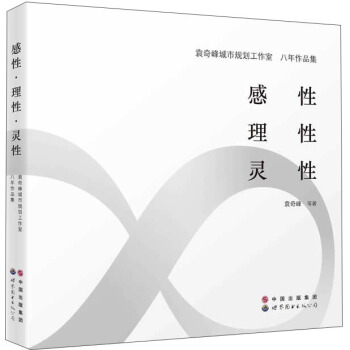

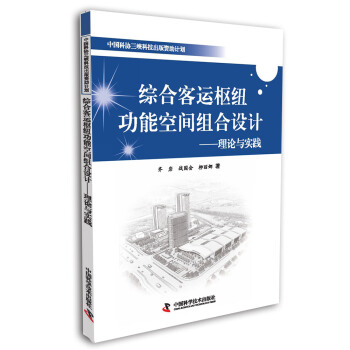
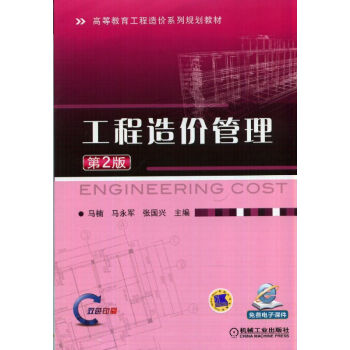

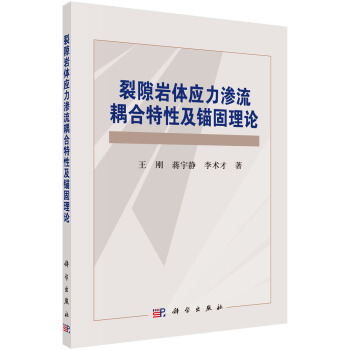
![綠房子 [The Green House] pdf epub mobi 電子書 下載](https://pic.windowsfront.com/11594995/548da961N146cd3ba.jpg)
![中國工程造價谘詢行業發展報告(2014版) [China Engineering Cost Consulting Industry Development Report] pdf epub mobi 電子書 下載](https://pic.windowsfront.com/11628849/551e5047N51a0b1c7.jpg)
![後開發區時代開發區的空間生産:以蘇州高新區獅山路區域為例 [Production of Space in Development Zone During Post-Development Zone Period: A Case Study in Shishan Road Area of SND] pdf epub mobi 電子書 下載](https://pic.windowsfront.com/11653544/54dddbdeN43033124.jpg)



![漢字中的中國建築 [Architecture in Chinses Characters] pdf epub mobi 電子書 下載](https://pic.windowsfront.com/11682880/554c97c2N3fe9b0bc.jpg)
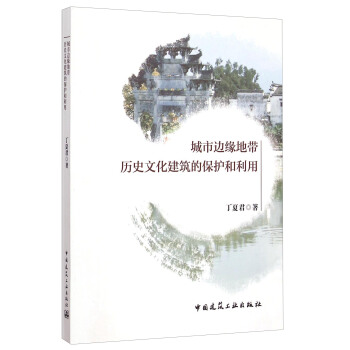
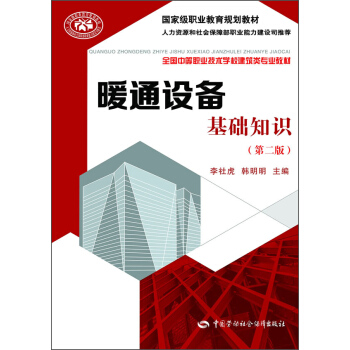
![景觀中的現代色彩 [Contemporary Color in the Landscape] pdf epub mobi 電子書 下載](https://pic.windowsfront.com/11708217/55829d19N1cea1679.jpg)